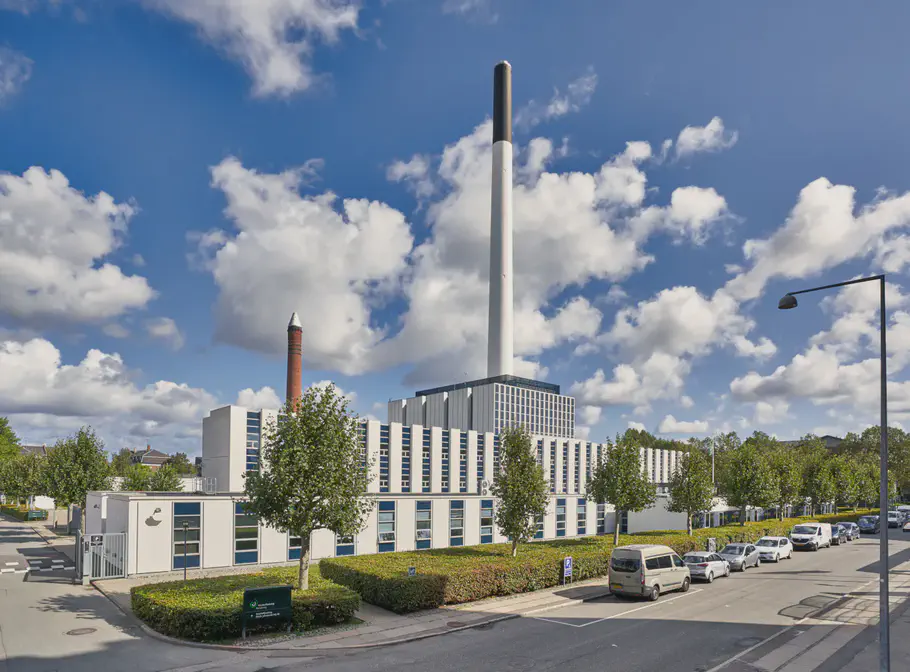Centralkommunernes Transmissions Selskab (CTR) has, through an AI Camp, examined whether the use of already existing data and Machine Learning can predict the optimal supply temperature.
Facts about CTR
CTR was founded in 1984 through a collaboration between five municipalities: Frederiksberg, Gentofte, Gladsaxe, Copenhagen and Tårnby. CTR supplies around 250,000 homes with district heating, which is produced by biomass, heat pumps and electric boilers.They have a turnover of almost DKK 2.4 billion annually and has approx. 35 employees.
Summary

Centralkommunernes Transmissions Selskab. Foto: CTR
The Project
Centralkommunernes Transmissions Selskab (CTR) is responsible for environmentally friendly district heating supply in the capital area.
As part of their DNA, CTR strives to deliver greener and more climate-neutral district heating, and in that endeavor they always seek to be better tomorrow.
Through an AI camp CTR wanted to investigate whether already existing data can be used to predict optimal supply temperature in the transmission system.
The goal is to investigate whether a machine learning model can predict the optimal supply temperature, so that the best electricity efficiency and supply delivery is ensured at the lowest possible temperature.
The challenge lies in the complexity of district heating.
The model must be able to take into account the natural hydraulic limitations that exist in the transmission system as well as the fact that the heat can be produced and delivered into the network from different exchangers, which means that the heat can be delivered from multiple sources.
It is therefore not possible to isolate a section 100% without losing information that is necessary for the prediction.
District heating is critical infrastructure and has a public utility obligation.
CTR is therefore obliged to supply hot water to its customers in the capital area.
A machine learning model which is supposed to predict the optimal supply temperature must therefore not risk the public utility obligations by predicting temperatures that are too low.
But at the same time, it must not predict too high a supply temperature either, as CTR’s aim is to optimize the supply temperature so that heat is not overproduced which is not used in the network by their customers.
If the supply temperature can be lowered in the network, without affecting the public utility obligation, it will be possible for CTR to utilize climate-friendly combustion methods, as well as reduce CO2 emissions.
Finally, it will result in even cheaper district heating for CTR’s customers in the capital area.
Thanks to the close collaboration with domain experts from CTR, it has been possible to identify the right data sources that can be used to predict the optimal supply temperature.
The team from CTR has been good at introducing Neurospace’s ML Engineers to the complexity so that they have the best prerequisites for understanding the data and how it behaves under normal circumstances.
This enables our ML Engineers to identify important periods in the data, which can either be used for labeling a machine learning model, or identify periods that behave abnormally.
The historical data from CTR are of high quality.
The high quality of the data, as well as their capability of delivering the data fast, has also given our ML Engineers plenty of time to verify the data, find a label, and prepare machine learning models.
Thus, two machine learning models were prepared during the Readiness Assessment and tested so that a business case could be identified.

Centralkommunernes Transmissions Selskab. Foto: CTR
Predicting optimal supply temperature
With expert guidance from the CTR team on the hydraulic constraints in the transmission system, it was possible to isolate data and create a machine learning model that can predict optimal supply temperature 12 hours ahead.
The model is particularly important in the “shoulder periods” (spring and autumn), when the weather is particularly changeable and district heating must assess when the temperature should increase.
The developed model has been verified by CTR via some test data over a shoulder period and its predictions have been validated by CTR’s experts.
In the given test period of 14 days, it was possible to reduce the supply temperature by an average of 5.4 degrees.
Predict hydraulic constraints
To ensure that the above machine learning model does not make predictions that exceed the hydraulic constraints of the transmission system, our ML Engineers have developed another machine learning model, that predicts the effect the predicted supply temperature has on the delta pressure.
This machine learning model must act as a watchdog for the first machine learning model, thus ensuring that it does not come up with a prediction that gives a too low supply temperature, thus gambling with the obligation to supply customers in the Capital Region.
Together, the two models will ensure that an optimal supply temperature is delivered, which is lowered during the shoulder period, but does not endanger the utility service.
Over time, the two machine learning models will cause more historical data to become available representing optimal supply temperature, which will provide even better and more accurate predictions from the machine learning models.